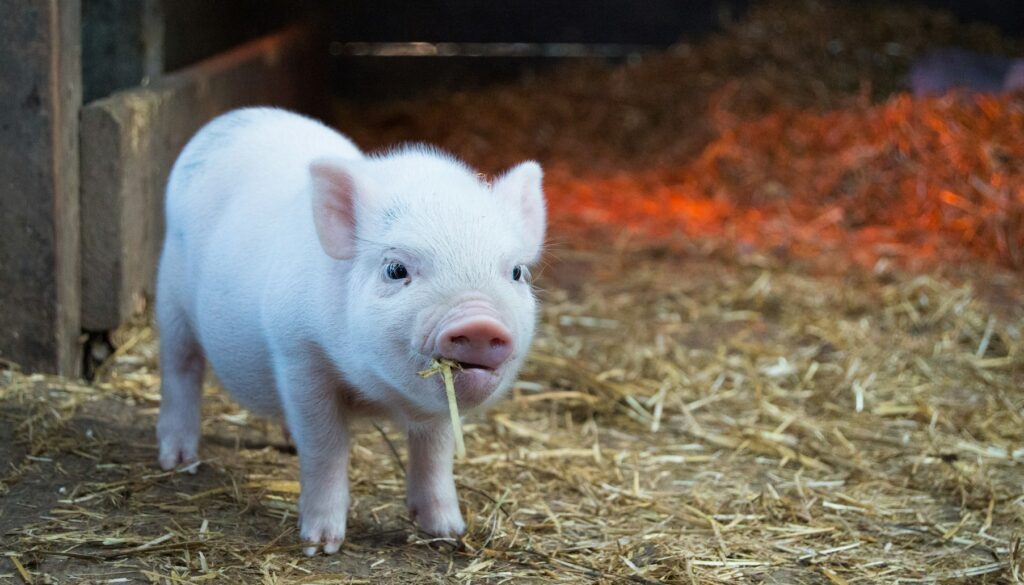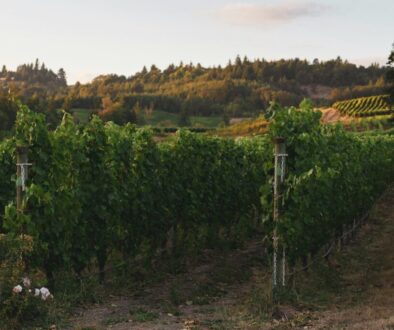What can we do to solve the shortage of farm vets?
Commentators, farmers and the veterinary profession have been reporting on a recruitment and retention crisis within farm animal practice for a number of years. While 10 new veterinary schools have opened at five universities over the last decade or so research from the Farm Animal Veterinary Society (FAVS) indicates that many undergraduate students may not opt to enter farm animal practice after graduation. What more can be done to support and encourage students and vets to work in farm animal practice? Jessica Sellick investigates. ………………………………………………………………………………………………..
It was at the start of the Bronze Age (approximately 3000 BC), that a man named Urlugaledinna, who lived in the Mesopotamia region (now Syria, Iraq, Iran, Turkey, and Kuwait), was known to be an expert at healing animals. Much later, in 1761, Claude Bourgelat founded the first dedicated veterinary school in Lyon (France) and the profession formally began. It was the work of the Odiham Agricultural Society, formed in May 1783, that led to the establishment of Britain’s first veterinary college in 1791, and a professional group dedicated to animal medicine. Initially veterinary medicine focused on horses (influenced by the needs of the British Army), but over time this expanded to cattle and other livestock, dogs, other companion animals and exotic animals.
From when the original TV series All Creatures Great and Small was first aired back in 1978 through its reboot in 2020; and from the fly-on-the-wall documentary series ‘Vets in Practice’ (1997-2002) through to the Yorkshire Vet – these programmes have followed the work of students in training or vets at work. Similarly, shows such as Clarkson’s Farm, Springtime on the Farm and This Farming Life all highlight the care and connection farmers have to their animals, and the vital role vets play today in helping to look after animal health and welfare.
In England, to become a vet you need to complete a veterinary degree approved by the Royal College of Veterinary Surgeons (RCVS). Full-time veterinary degrees typically take 5-6 years, with a faster-track 4-year course available for some science graduates. 5 GCSEs at grades 9-4 (A*-C) including English, Maths and Science and 3 A-Levels (or equivalent) including biology and chemistry are typically required, with entry to courses highly competitive. Upon graduation, vets may work in general practice from where some then move on to specialise in farm animals.
While there is high demand for places in veterinary schools the profession faces an ongoing recruitment and retention problem – particularly within farm animal practice. How many farm animal vets do we have, how many do we need, why is there a workforce shortage and what can we do about it?
How many vets do we have, and how many do farm animal practice? The RCVS maintains records on the number of veterinary surgeons joining and leaving the UK veterinary profession through the RCVS Register. Data can be broken down by the number joining the Register for the first time, the number moving from one registration to another category, and the number being restored to the Register after some time away. These figures show a steady increase in the number of new joiners between 2014 and 2018, and a drop between 2020 and 2021: there was 2,782 joining in 2019 compared to 2,119 in 2021 taking the 2021 figures back to 2014 levels. Alongside this, the number of vets leaving UK practice has been increasing as they move to another category or leave the Register entirely. The total number joining minus the total number who have left means the numbers joining the UK-practising category of the Register has fallen since 2019.
In parallel, 2,370 students enrolled on to veterinary science degree programmes in 2022, a fall of 290 (or 10.9%) on the previous year.
In February 2023 there were an estimated 28,920 UK practising veterinary surgeons, and 2,342 veterinary surgeons who were non practising. In the same period there were 22,131 registered veterinary nurses. The RCVS has approximately 144 accredited veterinary practices with farm animal general practice.
Respondents to the last Survey of the Veterinary Profession back in 2019 found while the proportion of veterinary surgeons working in clinical practice was stable overall, there had been an increase in the proportion of those working in small animal practice, and a decrease in those working in mixed practice. In 2019, 56.4% of veterinary surgeons work was in small animal only (including exotics) – an increase from 48.9% in 2010; 13.4% were working in mixed practice (a decline from 22.1% in 2010); and just 3.7% were working in farm animal practice/production animal practice, a slight decrease from 3.8% in 2010.
How many do we need? According to the Department for Environment, Food & Rural Affairs (Defra) and the Government Analysis Function, in England in 2021, there were 105,200 farm holdings with a total farmed area of 9 million hectares. Of these holdings, 30% were grazing livestock in lowland areas (32,000 farms), 12% grazing livestock in less favoured areas (12,200 farms), 5% dairy holdings (5,600 farms), 2% poultry (2,500 farms) and 2% pigs (1,800 farms). A further 7% of holdings were mixed (7,200 farms). In 2021, across the UK there were 190 million poultry, 33 million sheep and 9.6 million cattle.
There are no figures available on the number of vets per farm or per farm animal. An academic paper on a farm animal only practice in South West England found that while only 16% of holdings were dairy farms, they accounted for 79% of practice turnover. Here 33% of professional fees were related to fertility work – with the proportion of time spent on fertility increasing as a herd size increased. In the beef sector, 37% of medicines prescribed were antibiotics, with 64% of these for respiratory conditions. Paraprofessional services contributed 10% to overall turnover of which 69% was foot trimming. The authors highlighted the potential of further data collection on time services and fees; as well as benchmarking between different farm types.
Similarly, descriptions of what being a farm vet involves day-to-day highlight the varied role and how it changes according to the season. According to the Survey of the Veterinary Profession in terms of the allocation of working time, time spent on small animals has continued to increase and takes up the largest share of veterinary surgeons time (mainly dogs and cats). Overall, dogs and horses take up the most time on-call, followed by cats and cattle. 52.5% of veterinary surgeons carry out routine visits to clients – fewer than in 2014 (65%). In a typical month veterinary surgeons deal with 3-4 emergency cases out of hours away from the practice and 1 at the practice (with actual numbers varying considerably).
Week commencing 19 February 2024 Vet Record had 931 veterinary jobs advertised – including 83 positions in farm and large animal practices, and 33 specific farm veterinarian roles. While positions are being advertised this does not tell us about potential candidates and applications. For example, a survey by the British Veterinary Association (BVA) in spring 2022 found 86% of respondents representing organisations working with companion animals reported that they had received three applications or fewer when advertising a veterinary surgeon vacancy; and almost two in five respondents (38%) said it took them more than 6-months to fill a vacancy.
The Government publishes a list of shortage occupations as part of its points-based immigration system. If a role is in short supply non-UK residents can apply for them and while a visa is required the criteria is more relaxed for a Skilled Worker visa. Veterinarians – all jobs – in England, Scotland, Wales and Northern Ireland are on the list of shortage occupations (occupation code 2216).
In April 2023 Government Veterinary Services announced that it was considering a new veterinary programme to attract more vets into Government veterinary roles – and called on vets to shape the programme.
All of this information does not tell us about retention – what is staff turnover? Data from the American Animal Hospital Association (AAHA) has found the turnover of veterinarians and veterinary technicians is approximately 25% [one in four people working in these roles is either leaving or starting a new job at any given time]. At the same time, there is 1 applicant for every 10 veterinary jobs, suggesting some practices are consistently understaffed. Back in the UK, Vet Futures surveys of vet students and recent graduates suggest 41-50% of respondents feel their expectations were not being met, with a cohort of respondents also more likely to say they intended to leave the profession. But these figures do not reveal how many respondents will go on to leave the profession – either temporarily or permanently.
While it does not appear we centrally forecast and analyse demand and supply for the farm animal veterinary workforce, the evidence does suggest there is a shortage of farm vets.
Why is there a workforce shortage? According to the British Veterinary Association (BVA) a combination of factors are putting members under considerable strain leading to a ‘workforce crisis’ and ‘storm of shortages’. These factors include:
- Capacity: problems recruiting and retaining veterinary surgeons. A BVA member survey in autumn 2022 found 66% of respondents working with companion animals rated their job-related stress as poor, and 44% rated their work-life balance as poor.
- Rising caseloads, including a significant increase in pet ownership during COVID-19 pandemic. Research has shown that 18-34 year olds with children under 10 years of age were most likely to acquire a cat or dog during COVID-19, and that ‘pandemic pets’ experience more frequent vet consultations in an average year compared with the total.
- Immigration restrictions following the UK’s exit from the European Union. Three surveys of non-UK European veterinary surgeons carried out by the Institute for Employment Studies suggests new EU registrations are levelling off, whereas in previous years they had been rising – with researchers finding this could seriously impact upon the meat production sector where 90% of vets working in public health are estimated to be non-UK EU graduates.
- Cost-of-living crisis resulting in veterinary practices experiencing increased costs for energy, equipment and medicines, combined with increasing financial pressures on pet owners.
Other studies have looked specifically at the farm animal sector, finding:
- Teaching in veterinary schools is focused on small animals so graduates lack the confidence to go straight into farm practice.
- Lack of understanding about career pathways, availability and opportunities within the farm animal sector amongst undergraduate veterinary students.
- Lack of knowledge about farming and not feeling confident in communicating with farmers.
- The feminisation of the veterinary profession – and issues around gender pay gap and sex discrimination, particularly within productive animals practice.
- The economic pressures facing farm clients who need to balance productivity and profitability with animal welfare, prevention and therapeutic treatments.
The charity Vetlife provides support to the UK veterinary community and their families who have emotional, health or financial concerns, whilst seeking to prevent such situations arising in the future. In February 2023 the charity published data for the previous year showing demand for all three of its support services had increased. Its 24/7 confidential helpline received 3,503 contacts in 2022, up 3.3% from the 2021 total of 3,390. Its Health Support service, providing mental health care, saw a 15.5% increase in referrals during 2022. Most markedly, its Financial Support service received a 236% increase in applications. Reflecting on this increased demand, the charity believes it is the result of the national economic backdrop, and some factors specific to the veterinary industry (i.e., meeting client expectations in a difficult financial and social environment).
Evidence suggests that veterinarians are commonly exposed to occupational stressors which can lead to psychological distress, which typically results in mental health disorders such as depression, anxiety, and burnout and can, in some cases, culminate in suicide attempts or suicide deaths. Veterinary professionals frequently find themselves acting as accidental counsellors, playing a vital role in supporting the wellbeing of farming communities and helping farmers outside of their typical responsibilities.
What can we do to get more vets working in rural communities? The BVA highlights the role of farm vets in keeping productive animals healthy, optimising welfare and safeguarding public health; as well as supporting environmental goals, improving productivity, reducing carbon footprints and supporting biodiversity on farms. How can we encourage more veterinary professionals to work in farm animal practice, and retain those already working in this field?
We need to build on approaches that recruit people from rural areas, and offer training that includes farm animal experience. Surveys of farm animal practitioners have shown that having family who commercially farm, having support from an experienced colleague while on call, and performing more fam work increase the likelihood of practitioners staying in farm animal practice.
Extra Mural Studies (EMS) are a vital part of a student’s veterinary degree as they provide opportunities for them to implement practical skills and experience acquired during their veterinary programme. Challenges around the accessibility, availability and affordability of placements has led the RCVS from 2024 onwards to reduce compulsory EMS requirements by 8 weeks; with each student now needing to complete 10 weeks of animal handling and 20 weeks of clinical training (compared to the previous requirement of 12 weeks and 26 weeks respectively). Providing other opportunities for students to gain farm animal experience is important. Vet Partners, for example, offers a free summer farm vet academy where final year students can gain on-farm experience. And the RCVS is working with veterinary and agricultural organisations to build a Farm Vet Champions community with free, on demand, Continuing Professional Development (CPD).
We need to continue to build workforce models that encourage multidisciplinary team working in a farm animal context – where farm clinicians (vets, nurses, therapists) work with farmers, farm managers, stockpersons and other professionals (e.g. foot trimmers, scanning service providers). Here veterinarians are part of multi-professional teams rather than solo practitioners working in an isolated environment.
Can we use technology more so face-to-face veterinary resources are concentrated where they are needed most? Advances in technology have already had considerable impact on vets’ ability to diagnose and treat disease – from transmitting images for vets to make an initial diagnosis through to global positioning systems used to identify and monitor individual animals. Similarly, farmers use farm management software which indicates events that are due to happen, animals that need attention and key performance indicators. How can digital technology further support pre-planned health checks, routine, preventative and advisory work that veterinary professionals do?
Finally, we need to address wider workforce issues in rural localities (e.g. affordable housing, broadband and mobile phone coverage, transport, access to services, community facilities, schools and college provision, employment etc.). Place is an important component in people committing to jobs, and they also consider the needs of partners and dependents when doing so. We need a countryside which affords these opportunities if we want rural communities to become more, not less, sustainable.
What does the future hold? It is clear that there are workforce challenges in farm veterinary medicine due to high demand but low supply and that this is not a new situation. Nor is this situation unique to the UK as other countries report a shortage of vets.
In March 2024 the CMA published the findings of its initial review of how veterinary services are bought and sold. In addition to hearing about acute staff shortages and the impact this has on individual professionals, they identified multiple concerns with the market (e.g. medicine costs, weak competition and lack of choice in some areas) that they believe should be investigated further.
The Animal Health and Welfare Pathway, which includes a funded annual visit from a chosen vet or team of vets; alongside the (potential) spread of infectious diseases and (future) diseases of pandemic potential means there has never been a greater need or time for farm animal veterinarians.
The RCVS recently closed its ‘Survey of the Veterinary and Veterinary Nurse Professions 2024’. The survey is carried out every 4-5 years and was last conducted in 2019. Back then, despite the downsides of low pay, hard work and feeling undervalued, veterinary surgeons and veterinary nurses said they loved their work and their profession. What will the 2024 findings show? Watch this space.
…………………………………………………………………………………………………
Jessica is a project manager at Rose Regeneration and a senior research fellow at The National Centre for Rural Health and Care (NCRHC). She is currently evaluating a service that supports older people to maintain their independence; and reviewing neighbourhood based initiatives (NBI). Jessica also sits on the board of a charity supporting rural communities across Cambridgeshire.
She can be contacted by email jessica.sellick@roseregeneration.co.uk.
Website: http://roseregeneration.co.uk/https://www.ncrhc.org/
Blog: http://ruralwords.co.uk/
Twitter: @RoseRegen

![regulation Going for [rural] growth – how can regulators make a difference?](https://ruralwords.co.uk/wp-content/uploads/2025/03/regulation-1024x683-394x330.jpg)

